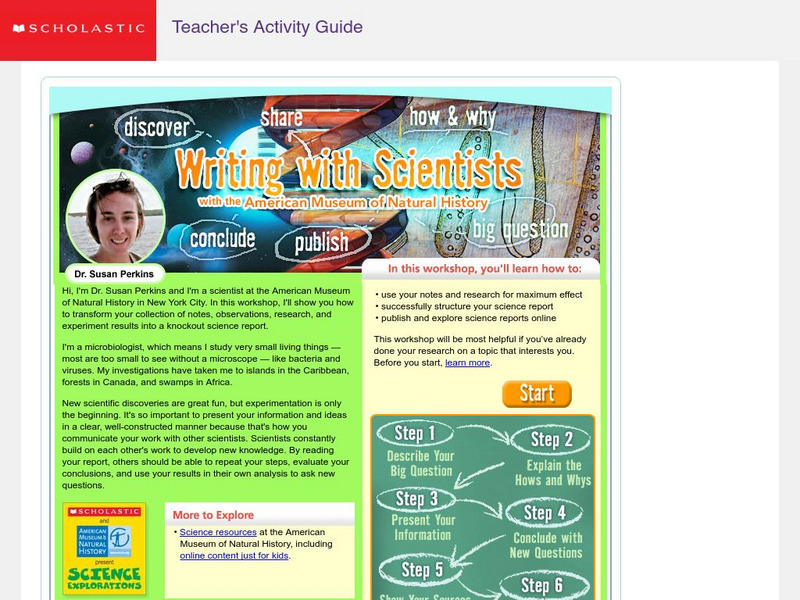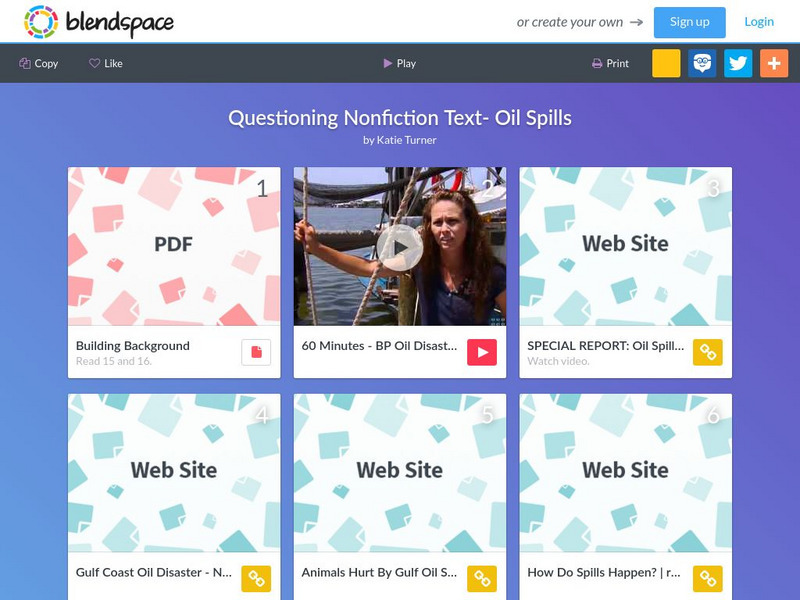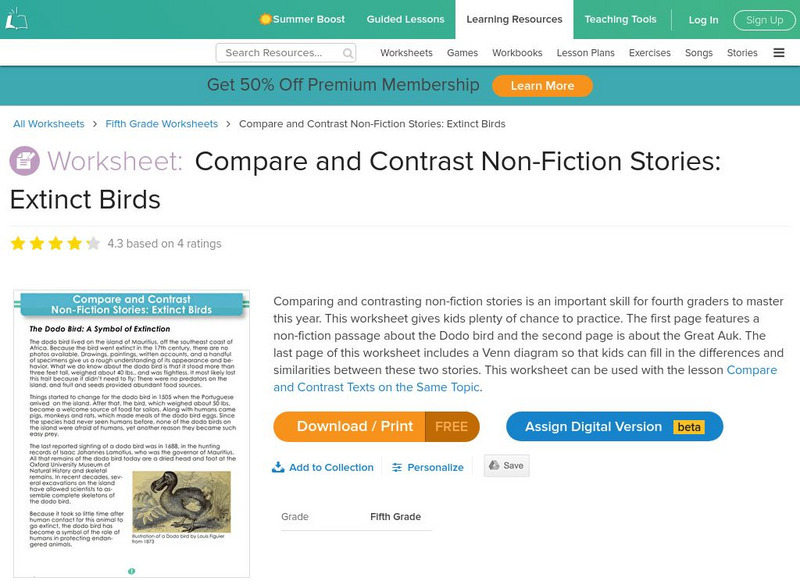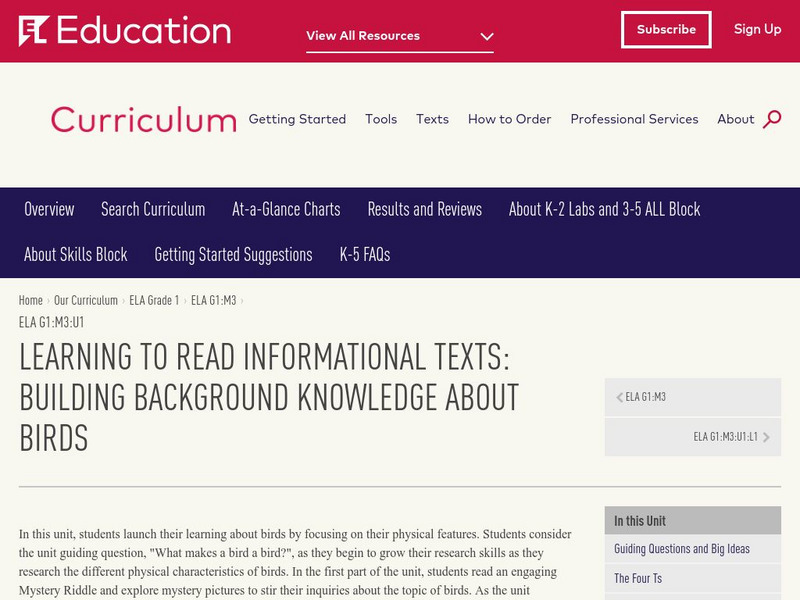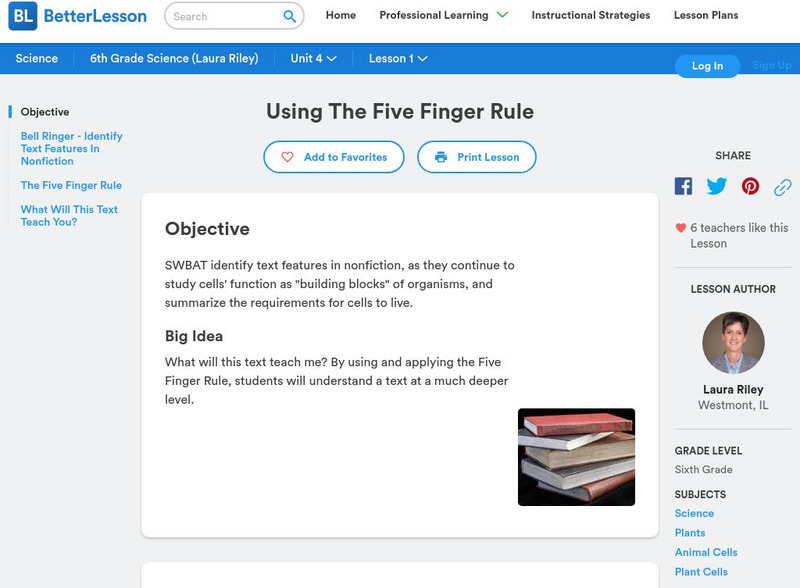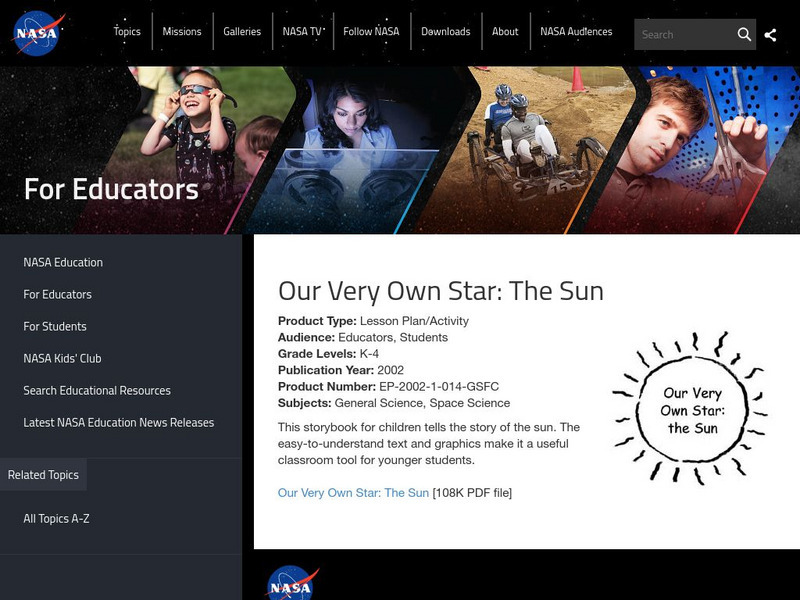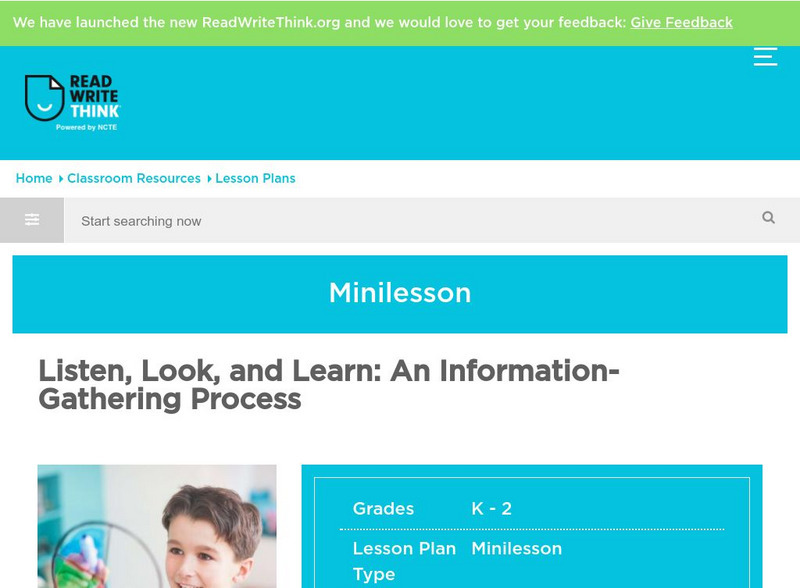Scholastic
Scholastic: Writing With Scientists With the American Museum of Natural History
Follow this six-step method and you'll have a good understanding of what a good scientific research paper involves and how it is organized. There are plenty of samples for you to look at. This explanation is also very helpful for...
TES Global
Blendspace: Questioning Nonfiction Text Oil Spills
An eight-part learning module with links to texts, videos, and websites to use while improving informational text skills through the topic of oil spills. The print materials have directed exercises for text analysis by students.
Education.com
Education.com: Compare and Contrast Non Fiction Stories: Extinct Birds
[Free Registration/Login Required] Students will compare two informational texts about two extinct birds, the Great Auk and the Dodo. A Venn Diagram is provided to be used when comparing an contrasting tests.
CommonLit
Common Lit: What Is Antarctica?
CommonLit.org is a wonderful resource to use in a Language Arts classroom. Each story or article is accompanied by guided reading questions, assessment questions, and discussion questions. In addition, students can click on words to see...
CommonLit
Common Lit: "What Is an Eclipse?" by Nasa
CommonLit.org is a wonderful resource to use in a Language Arts classroom. Each story or article is accompanied by guided reading questions, assessment questions, and discussion questions. In addition, students can click on words to see...
CommonLit
Common Lit: Why Are Bees Vanishing
CommonLit.org is a wonderful resource to use in a Language Arts classroom. Each story or article is accompanied by guided reading questions, assessment questions, and discussion questions. In addition, students can click on words to see...
CommonLit
Common Lit: Genetically Modified Salmon: Food or Frankenfish
CommonLit.org is a wonderful resource to use in a Language Arts classroom. Each story or article is accompanied by guided reading questions, assessment questions, and discussion questions. In addition, students can click on words to see...
Thinkport Education
Thinkport: Citing Textual Evidence: Changing Oceans
Learn how to cite evidence to support ideas presented in a science article about oceans.
Better Lesson
Better Lesson: Picture Walk and Partner Talk
Students will participate in a picture walk through the expository text "Seasons and Weather". The purpose of the picture walk is to prepare the students for reading the story and gives them practice in using picture clues to make...
EL Education
El Education: Learning to Read Informational Texts: Building Background
In this comprehensive unit, students launch their learning about birds by using informational texts. As students read these texts, they build background knowledge and develop their skills as readers of informational texts. Included are...
Better Lesson
Better Lesson: What Shapes the Land?
In this lesson plan, the teacher will read a book about different landforms. The children will learn about the features of the landforms and how they were shaped by natural forces. Then text features will be discussed. The children will...
Better Lesson
Better Lesson: Compare and Contrast Informational Text
This third grade lesson plan engages students in comparing and contrasting paired informational text passages about frogs. Students will use a Venn Diagram to keep track of the information.
CommonLit
Common Lit: Woolly Mammoth Sparks Debate Over Cloning
CommonLit.org is a wonderful resource to use in a Language Arts classroom. Each story or article is accompanied by guided reading questions, assessment questions, and discussion questions. In addition, students can click on words to see...
CommonLit
Common Lit: Voyage to Pluto
CommonLit.org is a wonderful resource to use in a Language Arts classroom. Each story or article is accompanied by guided reading questions, assessment questions, and discussion questions. In addition, students can click on words to see...
CommonLit
Common Lit: What Is the International Space Station
CommonLit.org is a wonderful resource to use in a Language Arts classroom. Each story or article is accompanied by guided reading questions, assessment questions, and discussion questions. In addition, students can click on words to see...
CommonLit
Common Lit: "Don't Hate on the Trait" by Bird Brain Science
CommonLit.org is a wonderful resource to use in a Language Arts classroom. Each story or article is accompanied by guided reading questions, assessment questions, and discussion questions. In addition, students can click on words to see...
CommonLit
Common Lit:our Deportment or the Manners, Conduct, and Dress of Refined Society
A learning module that begins with an excerpt from "Our Deportment or the Manners, Conduct, and Dress of Refined Society" by John H. Young, accompanied by guided reading questions, assessment questions, and discussion questions. The text...
Better Lesson
Better Lesson: Using the Five Finger Rule
Students identify text features in nonfiction, as they continue to study cells' function as building blocks of organisms, and summarize the requirements for cells to live.
NASA
Nasa: Classroom Activity: Our Very Own Star: The Sun
This PDF storybook for children tells the story of the sun. The easy-to-understand text and graphics make it a useful classroom tool for younger students.
CommonLit
Common Lit: Text Sets: Nature and Conservation
Learn about how the natural world interacts with itself and how people impact the planet with this science-based text collection of 46 Grade-Leveled texts (3-12) on the topic of Nature and Conservation. [Free account registration...
CommonLit
Common Lit: Text Sets: Science of the Body
Introduce students to how the body looks and works with these texts on biology and genetics. This collection includes 20 Grade-Leveled texts (5-10) on the topic of Science of the Body. [Free account registration required for specific...
CommonLit
Common Lit: "Let's See What You're Made Of" by Bird Brain Science
This informational, scientific text explains how cells, the smallest unit of a living organism, make up every living thing in the world. As you read, take notes on the comparisons used in the text to explain how cells work. [Free account...
ReadWriteThink
Read Write Think: Listen, Look, and Learn: An Information Gathering Process
This lesson models an information-gathering process for primary learners as they listen to and look at resources, seeking information pertinent to the questions on an information wheel. Guiding the listening, looking, and learning...
PBS
Pbs Learning Media: The Worm Turns Lesson Plan: Molly of Denali
This instructional activity, based on the animated story "The Worm Turns" from the PBS KIDS series MOLLY OF DENALI, helps children use several types of informational texts to gather facts. In the video, Molly and her friends are...


